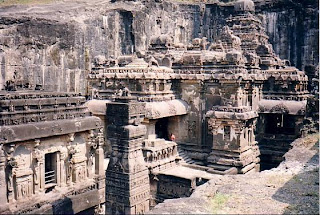If you really want to see all the worth visiting places in India, one tourist visa of six months can be argued to be considered enough. There are more tourist destinations in India then can be mentioned in one book. Almost every State in India has over ten major tourist destinations and there are cities which can not be fully experienced even in One full week. Not to forget that several states of India are bigger than most of the countries in the world and there are twenty-eight states in India. Some highly recommended sights in India :
The Taj Mahal : It is actually bigger and more majestic than what it looks in the photograph.
Varanasi : Hindu religious rituals, some harking back to the Vedic age, 5000 years ago, Varanasi is the oldest living city of the world and the birth place of Hinduism. Don't miss the evening Ganga Aarti.
Tigers : They may or may not be present in all the tiger reserves but your chances of seeing a tiger are fairly Sangla-valley : Considered one of the most beautiful valleys of the world lies in the upper regions of Himachal Pradesh. It is Extremely scenic with photogenic landscapes and unforgettable Landscapes.
Leh : Considered to be on the top of the world. One of the highest inhabited cities of the world. It gives a different idea of high altitude altogether with unbelievable landscapes.
Srinagar : It is the capital of the State of Jammu and Kashmir. Extremely beautiful city in the midst of the Himalayas with a very beautiful Dal lake in it.
Gangtok : Capital city of Gangtok. Gangtok is a bewitching hill-station located amidst the multiple-hued mountains of Sikkim.
Goa : Ruled by Portuguese for over 400 years, Goa is a cocktail of Indian and Portuguese culture. Quite a different kind of place altogether, Goa is full of beautiful beaches and flocking tourists.
Pondicherry : Pondicherry was a French colony over two hundred years and has a lot of sighting of French influence throughout it's territories. Now tourists often flock there for spiritual ashrams or enjoyable pubs and parties.
Chennai : It is the Capital city of the southeren state of Tamilnadu in SouthIndia and a different kind of Indian city altogether. Buying a saree or Marina beach can be considered worth-while in Chennai.
Tirupati Balaji : If you want to see the material richness of a religious place, visit this temple. It is considered to be the richest temple in the world and one surprising sight to see for a non Indian.
Nalanda : Related to Buddhism, It was the oldest university of the world later on destroyed completely during the Muslim invasions of India. Sights of Buddhist interest like Pavapuri and Rajgir are in the vicinity.
Golden Temple : An actual Temple crafted of Gold is the birth place of Sikhism. Looks very serene early in the mornings.
Khajuraho : Supposedly the birth place of Kamasutra, Khajuraho is full of temples with erotic sculptures all around them. One of the most interesting and less talked about aspects of Hindu culture.
Kochi : In a State full of secluded and ravishing beaches, Kochi is one of the most sought after tourist destination. It is advisable to visit the surrounding beach cities of Kochi. Don't forget to experience backwaters of Kerala in a house boat.
Andamans : Beautiful Island territory of India in the Bay of Bengal, Andaman islands can be considered one of the best island destinations in the world.
Jaisalmer : A city located in the middle of desert, Jaisalmer is a place to go for watching the beautiful view of sun lighted virgin deserts of Thar Desert.
Sinhagad, (20km from pune). The view is Great . It's about 20km from pune. A fort built in era of Chattrapati Shivaji Places to visit Lonavla & Khandala Sinhagad Matheran Mahableshwar Panchgani Lohagad & Visapur Forts Rajgad Fort Pratapgad Fort Purandar Torna Bhimashankar Temple Dehu Karla Caves Bhaja Caves Bedsa Caves Alandi Jejuri Ashtavinayaka
























